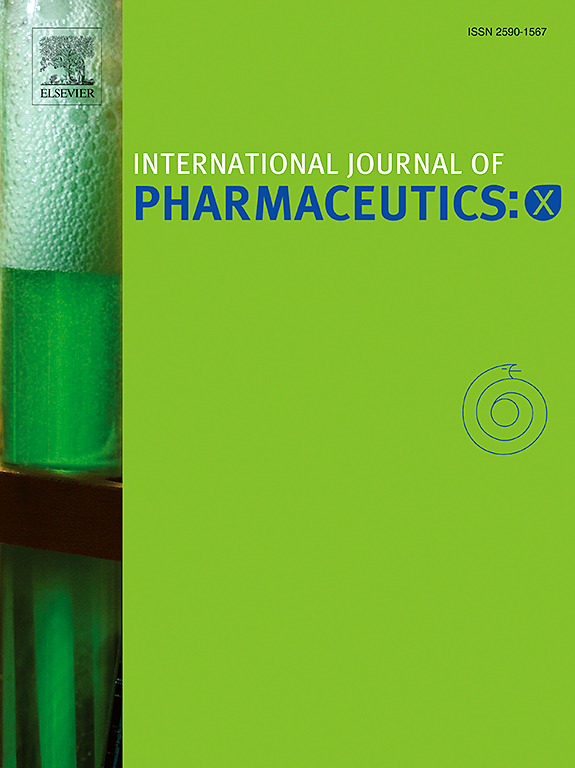植物源性细胞外囊泡作为胶质母细胞瘤治疗的天然药物传递平台:在调节肿瘤微环境的同时保持内皮完整性的双重作用
IF 6.4
2区 医学
Q1 PHARMACOLOGY & PHARMACY
引用次数: 0
摘要
胶质母细胞瘤(GBM)是最具侵袭性的原发性脑肿瘤,由于限制性血脑屏障(BBB)和血肿瘤屏障(BTB)的异质性,治疗选择有限。替莫唑胺(TMZ)是标准的化疗药物,具有血脑屏障渗透性差、降解快和全身毒性。植物源性细胞外囊泡(PDEVs)已成为一种很有前途的天然纳米载体,具有生物相容性、稳定性和跨越生物屏障的能力。本研究探讨了利用柑橘柠檬(LDEs)细胞外囊泡包封和递送TMZ (EVs@TMZ)治疗GBM的方法。通过超声分离、表征并加载TMZ。采用紫外可见光谱和红外光谱对其包封效率、稳定性和理化性质进行了评价。利用生物打印的U87胶质母细胞瘤细胞在Matrigel中与hCMEC/D3内皮细胞共培养,复制肿瘤微环境,建立3D BTB模型。通过TEER和fitc -葡聚糖检测评估屏障完整性。在该模型中评估了摄取、细胞毒性和肿瘤侵袭,以及氧化应激和VEGF-A分泌。LDEs有效封装TMZ,提高了药物在生理条件下的稳定性。EVs@TMZ穿过内皮屏障,同时保持屏障完整性并减少tmz诱导的ROS产生。在3D胶质母细胞瘤模型中,EVs@TMZ对肿瘤细胞表现出很强的细胞毒作用,同时最小化内皮毒性和氧化应激。此外,VEGF-A的分泌被抑制,破坏了促肿瘤的途径。这些发现突出了柑橘衍生的ev作为TMZ的生物相容性高效载体,为克服当前GBM治疗中的挑战提供了一种有希望的方法,并支持pdev用于脑肿瘤治疗的进一步开发。本文章由计算机程序翻译,如有差异,请以英文原文为准。

Plant-derived extracellular vesicles as a natural drug delivery platform for glioblastoma therapy: A dual role in preserving endothelial integrity while modulating the tumor microenvironment
Glioblastoma (GBM) is the most aggressive primary brain tumor, with limited treatment options due to the restrictive blood-brain barrier (BBB) and the heterogeneity of the blood-tumor barrier (BTB). Temozolomide (TMZ), the standard chemotherapy, suffers from poor BBB permeability, rapid degradation, and systemic toxicity. Plant-derived extracellular vesicles (PDEVs) have emerged as promising natural nanocarriers, offering biocompatibility, stability, and the ability to cross biological barriers. This study investigates the use of extracellular vesicles from Citrus limon L. (LDEs) to encapsulate and deliver TMZ (EVs@TMZ) for GBM treatment.
LDEs were isolated, characterized, and loaded with TMZ via ultrasonication. Encapsulation efficiency, stability, and physicochemical properties were assessed using UV–Vis and FTIR spectroscopy. A 3D BTB model was developed using bioprinted U87 glioblastoma cells in Matrigel, co-cultured with hCMEC/D3 endothelial cells to replicate the tumor microenvironment. Barrier integrity was evaluated through TEER and FITC-dextran assays. Uptake, cytotoxicity, and tumor invasion were assessed in this model, along with oxidative stress and VEGF-A secretion.
LDEs effectively encapsulated TMZ, enhancing drug stability under physiological conditions. EVs@TMZ crossed the endothelial barrier while preserving barrier integrity and reducing TMZ-induced ROS production. In the 3D glioblastoma model, EVs@TMZ showed strong cytotoxic effects on tumor cells while minimizing endothelial toxicity and oxidative stress. Moreover, VEGF-A secretion was suppressed, disrupting pro-tumorigenic pathways.
These findings highlight Citrus-derived EVs as biocompatible, efficient carriers for TMZ delivery, offering a promising approach to overcome current challenges in GBM therapy and supporting further development of PDEVs for brain tumor treatment.
求助全文
通过发布文献求助,成功后即可免费获取论文全文。
去求助
来源期刊

International Journal of Pharmaceutics: X
Pharmacology, Toxicology and Pharmaceutics-Pharmaceutical Science
CiteScore
6.60
自引率
0.00%
发文量
32
审稿时长
24 days
期刊介绍:
International Journal of Pharmaceutics: X offers authors with high-quality research who want to publish in a gold open access journal the opportunity to make their work immediately, permanently, and freely accessible.
International Journal of Pharmaceutics: X authors will pay an article publishing charge (APC), have a choice of license options, and retain copyright. Please check the APC here. The journal is indexed in SCOPUS, PUBMED, PMC and DOAJ.
The International Journal of Pharmaceutics is the second most cited journal in the "Pharmacy & Pharmacology" category out of 358 journals, being the true home for pharmaceutical scientists concerned with the physical, chemical and biological properties of devices and delivery systems for drugs, vaccines and biologicals, including their design, manufacture and evaluation. This includes evaluation of the properties of drugs, excipients such as surfactants and polymers and novel materials. The journal has special sections on pharmaceutical nanotechnology and personalized medicines, and publishes research papers, reviews, commentaries and letters to the editor as well as special issues.
 求助内容:
求助内容: 应助结果提醒方式:
应助结果提醒方式:


